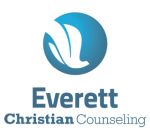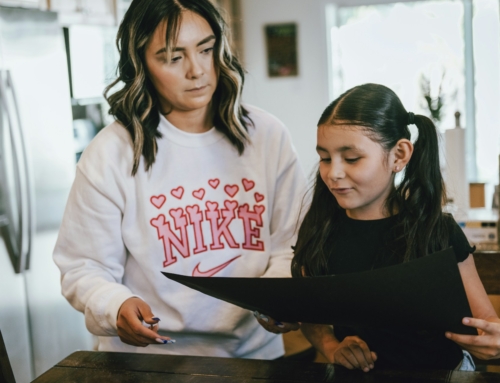 In my previous article, I discussed the mandate that fathers have to protect their families from the pornography that is widespread in our society. But let’s be honest, if pornography and sexual images in general were not interesting, desirable, and pleasurable to our human nature, sex wouldn’t “sell.” Pornography would not exist, the term sexual addiction would be an oxymoron, and the content of the mainstream media would look very different than it does today.
In my previous article, I discussed the mandate that fathers have to protect their families from the pornography that is widespread in our society. But let’s be honest, if pornography and sexual images in general were not interesting, desirable, and pleasurable to our human nature, sex wouldn’t “sell.” Pornography would not exist, the term sexual addiction would be an oxymoron, and the content of the mainstream media would look very different than it does today.
The fact is that sex was always meant to be pleasurable and exciting, for this is how God designed it. But the issue is that our culture has violated the sacred aspect of our human sexuality by exploiting it for pleasure and profit. This commodification of human sexuality, and the ease of access to soft and hard-core pornography through the Internet, has sent out incredibly powerful and unhealthy messages about male and female sexuality that have permeated our society.
Thankfully, you and I are able to protect our families from these unhealthy messages. There are plenty of different ways to do this, but I believe that we should start with the ultimate starting point, namely, our own hearts.
Guard Your Own Heart
If we are to be successful in protecting our families, we have to start with ourselves. God’s Word is incredibly clear on this issue:
Keep your heart with all diligence, for out of it spring the issues of life.
(Proverbs 4:23)
If we can be successful in making sure that we are not allowing our hearts and minds to be swayed into viewing pornographic content, and aren’t buying into any notions of participating in sexual exploitation, then we set a healthy example for our families to follow. This is a leadership issue just as much as it is a moral-spiritual-cultural issue.
Talk to Your Children About the Dangers of Pornography
On this matter of leadership, it is imperative that we proactively engage our sons and daughters in conversation early on about the harmful effects of pornography, and about how our culture exploits human sexuality. It is even more important to model and discuss what a healthy masculinity and femininity look like. When our children have a parental model to follow, they will be able to make the distinction between healthy and unhealthy notions of sexuality, both in their relationships and in the culture at large.
 Create a Safe Environment in Your Home
Create a Safe Environment in Your Home
It is important to stay calm as we have these discussions with our kids. They have to be able to see that we are not afraid of the topic of pornography, especially in cases when they let us know that they have either viewed it themselves or had someone show it to them.
If you create an atmosphere of openness, where pornography and sexuality as a whole can be freely addressed without you becoming upset, shaming them, or shying away from it, then the possibility for having future discussions in which you can answer their questions drastically increases. This is because they will have learned that they can safely engage you on those topics at any point in time. That is good. That is healthy.
Be Your Child’s Primary Influence
There are essentially two components at play here. The first is to show our kids what a healthy masculine and feminine sexuality look like, so that they can identify and be prepared to address the unhealthy versions of sexuality put forth by the general culture. The second is to proactively and confidently engage the topic of sexuality with our kids as early as possible.
As things currently stand, the average age at which children are being exposed to pornography is 12 years of age (The NoFap Experiment: A Voyage Through Porn, Addiction, Support, and Recovery). Therefore, the reality is that if your children do not learn about healthy sexuality and the dangers of pornography from you, they will learn the unhealthy and pornographic versions of sexuality from someone else. Count on it. Therefore, one of the greatest ways you can protect them is to be their primary influence.
Know the Emotional and Relational Side Effects of Pornography
Fathers who avoid pornography prevent themselves from experiencing the neurological side effects that can occur when dealing with an addictive substance such as pornography. These effects are similar to those caused by other types of addiction (Hilton & Watts, 2011). By making such a decision, they also guard against potential breaches of trust within their marriage.
My experience as a Marriage & Family Therapist has been that pornography use by a husband leads to indescribably painful and traumatic breaches with his spouse. Mending these breaches and restoring trust is extremely difficult and takes a substantial amount of time. Fathers who educate themselves about the addictive nature of pornography, and make the decision to stay away from it, enable themselves to remain emotionally and relationally healthy.
Resources about Pornography
Many of you may be interested in resources that can help you to become informed about the harmful effects of pornography. The following is a list of resources for you to consider:
- In the Shadows of the Net by Dr. Patrick Carnes
- Wired for Intimacy by Dr. William Struthers
- EXXXIT by John Hammer
- Pornland by Dr. Gail Dines
Web resources include:
- Scratching the Surface – Interview with Dr. William Struthers
- Fight the New Drug
All of these resources can be wonderful tools to help prepare you for the daily battle to protect your family.
Christian Counseling in the Fight Against Pornography
The unfortunately reality is that millions of people are being emotionally and relationally damaged by their use of pornography. As a Christian counselor, my hope is that if you are struggling to overcome patterns of viewing pornography, you will seek help as soon as possible. Here at Seattle Christian Counseling, you will find a comfortable, safe, and confidential environment in which you can begin to effectively address your pornography usage patterns and also rebuild the close relationships that have been affected by that use. If you would like more information on how Christian counseling can help you in your fight against pornography, please go to everettchristiancounseling.com.
Hilton Jr, D. L., & Watts, C. (2011). Pornography addiction: A neuroscience perspective. Surgical neurology international, 2.
The NoFap Experiment: a voyage through porn, addiction, support, and recovery
Photos
“Walk towards the light,” courtesy of Joris Louwes, Flickr CreativeCommons (CC BY 2.0); “The Wall,” courtesy of Mike Knlec, Flickr CreativeCommons (CC BY 2.0)










